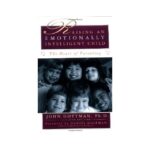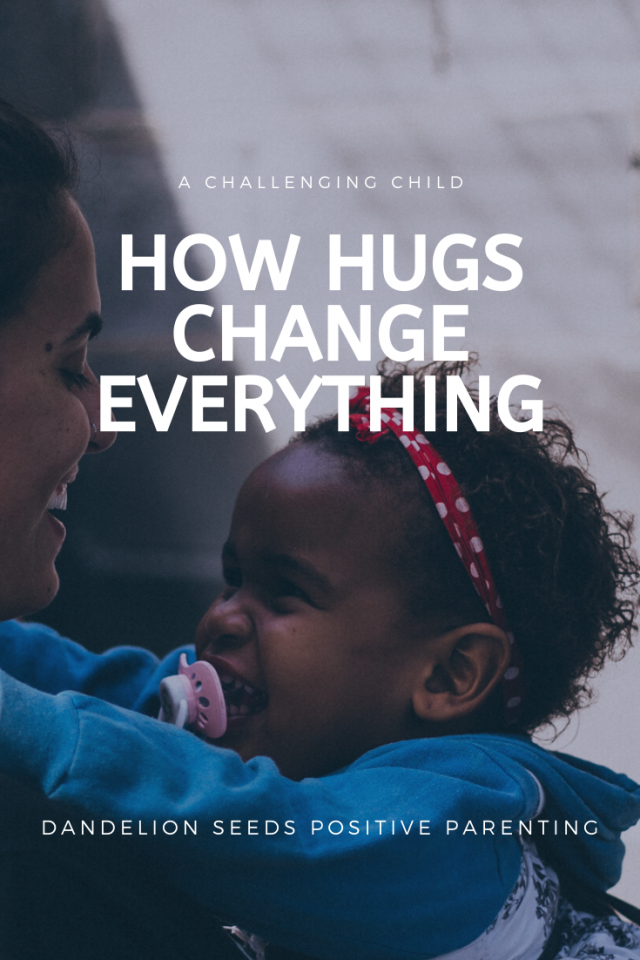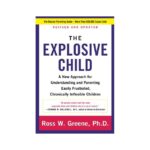
Sign in
Don't have an account with us? Sign up using the form below and get some free bonuses!

In positive parenting, the power of a hug is some of the best preventative medicine that exists for the adult-child relationship, even with children who aren’t our own.
A girl I'll call Juniper, who was then two and a half years old, was standing with my child and me in the doorway just before we joined Teacher Tom for outdoor story time. It was the very first time I'd ever met her. I was the last adult chaperoning kids out of the building, so I couldn't join story time with my child until I was sure all the kids were accounted for. Juniper had no intention of joining us, though, as I could clearly see from her body language. As Teacher Tom noticed my child and me waiting in the vestibule, he beckoned for us to join him. A lot of people were waiting for us. He was unaware that I was encouraging Juniper, who was cowering in a corner, to follow us.
In an attempt to connect with Juniper, I crouched down to her level and reached out my hand. I'd have held her hand, hugged her, or picked her up, if she'd indicated any of those options were acceptable. To my surprise, however, she jumped at me like a mini-superhero, then started throwing punches and kicking me. She tried to bite my arm. Holy moly.
Despite being momentarily stunned, I heard myself think, "I'm going to Janet Lansbury this." (I didn't know Janet was a verb. I always thought she was an early childhood expert.) As calmly as I could muster despite Juniper's flailing limbs, I held her shoulders at a safe distance from my body. I looked her in the eye and said, "I won't let you hurt me. I'll help you through this." Immediately, she calmed, took a final halfhearted swing at me, and took off running down the hallway of the building. Knowing I couldn't leave a child alone in there, I invited my child to follow me as I gently pursued Juniper. I gave her plenty of space.
To be clear, I use positive discipline as a synonym for teaching. I don't support force or punishment of any kind as a parenting approach. In my experience, a hug and almost any form of positive parenting go so much farther than anything punitive.
Before I continue with what happened, it’s helpful to understand some of the different approaches I could’ve taken, based on different parenting styles. This child didn’t need to be mine for the same neuroscience to apply.
If I acted like an authoritarian parent, it likely would've presented as me yelling after her, catching her, and picking her up against her will. Flailing or not, I'd plop her down into to story time. Traditional authoritarian parenting (the most commonly punitive option) centers around adults controlling children. It has negative long-term consequences for the parent and child relationship, as well as for the child

herself, as John Gottman, Ph.D. describes in Raising an Emotionally Intelligent Child (afflinks). Forced compliance does nothing to support children’s emotional intelligence or attachment to their caregivers, and I certainly wasn't going to make this little stranger "behave" somehow.
On the opposite end of the parenting style continuum from authoritarian parenting is permissive parenting. However, Dr. Gottman, Janet Lansbury, and many other experts caution that permissive parenting isn't the antidote to authoritarian parenting. It, too, carries risks for the child. Children need loving and reasonable limits to feel secure. Permissive parenting might’ve looked like my letting Juniper run wherever she wanted, and not saying a word to her about it.
Neither approach would've given Juniper helpful tools upon which to rely in the future. Moreover, if she happened to be a highly sensitive child (HSC), odds are good that anything punitive might have sent her into an even tougher emotional situation.

This balanced type of positive parenting is called authoritative parenting. Note that although the name authoritarian parenting, which is negative, sounds like authoritative parenting, the latter is positive.
In any case, this certainly wasn't the time for a sticker chart or a "red behavior card,” which is common in many preschools. (I'd argue that no time is right for those, but that's another post.) As Ross Greene, Ph.D., argues in The Explosive Child, "...The reason reward and punishment strategies haven't helped is because they won't teach your child skills he's lacking or solve the problems that are contributing to

challenging episodes..." These methods don't teach children how to cope when they're emotionally overloaded.
Conversely, positive parenting is linked with better long-term outcomes for the child. This is true not only short-term, but also for the child's long-term wellbeing (1). Examples of positive parenting styles include RIE® (2), attachment parenting, authoritative parenting, and many others. Descriptions are readily available on the Internet, and my website has a list of my favorite positive parenting books. (Yep, I've read everything there. I share only the ones that have solid, actionable messages and that promote positive parenting.) I wish I had a dollar for every style of parenting in the dictionary these days, but truthfully, the names don't matter much.
All that said, I wasn't entirely enthusiastic about pursuing this small Mike Tyson. However, I realized that this responsibility was on me even if I didn't sign up for it.
I trusted that I was there for a reason. I needed to find that middle ground that would help Juniper trust that I was on her side while still accomplishing what we needed to do: reconnect with the class.
So, I offered her a hug. Totally bewildered for a moment, she yelled, "No!" And then she sucked her thumb, rocked herself, fell to the floor crying, and then got up and ran at me again. For a moment, I almost blocked my body for safety. I saw something different in her eyes, though, so I stayed within reach. She ran to me as if I were a long lost friend and collapsed into my arms, bawling her little eyes out.
She hugged and hugged and hugged, leaving my daughter and me surprised, but on we went hugging. Her tension melted away entirely. We proceeded to story time peacefully.
At that point and for reasons unbeknownst to me at the time, I told her that I have a "hug button" on my shoulder. Anytime she'd need one, she could come and touch my shoulder, and I'd know what to do. I made sure to always crouch down when she came near, just in case she needed to push it.
If any child were to put something unsafe in her mouth and start running down the hill on the playground, it was her. With some false starts, I learned that following her and asking her to remove the choking hazard would backfire. It was all the convincing she needed to keep the aforementioned item there. When I pushed too hard or sounded forceful, fearing for her safety, she’d take off running and create an even greater safety risk to herself.
Once I realized that, I chose to address her potential issues proactively. The moment I saw her put something in her mouth, I'd crouch down and call her name from wherever I was on the playground. I'd stay put. She'd look over, and I'd point to the invisible hug button on my shoulder.
More often than not, she'd nod and come running my direction (sometimes with the aforementioned object still in her mouth, but it was progress). She'd hug me for as long as she needed and then relinquish the item.
Except for when she didn't come. I'm not perfect (more like a million miles from it), and sometimes my tone would be too worrisome for her. Or sometimes I'd think I'd done it "right," but she was too emotionally overloaded to connect.
I lost count of how many times a proactive hug completely deescalated potential problems. I'd see a "look" on her face that signaled trouble, so I'd offer a hug. And just like magic, all was right with her world again. Some of the other kids in class even joined in on the “hug button” initiative.
On the last day of class, Juniper walked up to me and offered me a hug for the first time, proactively. She'd never done that before. I happily accepted. Much to my surprise, she cupped my face in her little hands and she whispered, "I love you." It was the perfect 2.5-year-old translation of "Thank you for understanding exactly what I needed when I didn't have the words to explain it."
And I love her, too, in the most wonderful way of loving a small person I'll likely never see again. She helped show me the power of positive parenting from a lens outside that of my own family. She reinforced that it's better not to chase my child; but instead, to be rock solid and a "safe place" emotionally. She confirmed what the the gentle parenting books say should happen when a child feels connected. My own parenting is better for the important positive parenting lesson she taught me.
There's a lot to be said for the power of a hug.
_____________________________________________________________
Source (1): https://www.parentingscience.com/authoritative-parenting-style.html
Source (2): https://www.rie.org/educaring/ries-basic-principles/